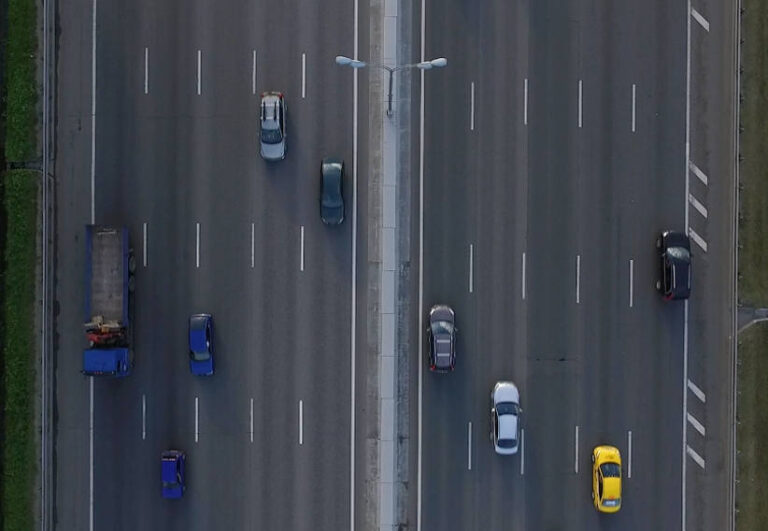Of the 19.5 million vehicles on Australian roads, four million are commercial, including 624,000* heavy vehicles.
With more commercial vehicles on our roads, up 16.4 per cent in the last five years,* comes higher fuel consumption, more fatalities, crashes and poor driving, with heavy vehicles disproportionately involved in casualty crashes.**
One solution that goes a long way to mitigating these issues is improving driver behaviour through the installation of telematics – telecommunications and informatics systems.
This is supported by studies from the Transport Research Laboratory (TRL), which shows that a one kilometre per hour reduction in speed leads to a three per cent drop in accidents.
Telematics technology produces myriad data variables to monitor live and historical journeys, as well as location information integrated with Workplace Health and Safety (WHS) and National Heavy Vehicle (NHV) compliance systems.
Real-time alerts track maintenance requirements, harsh braking, dangerous cornering, idling time, seat belt-use and rest breaks. Remote disable systems track portable assets such as containers, trailers and cargo.
“The technology is gold-standard, with the latest data around every business imperative, from environmental impacts to customer service.
“But often it’s just left in a drawer. Companies invest in the latest technology to comply with the regulations and tick the compliance box. Then it’s ignored,” says Chris Witt, CEO of Euclidic Systems, a developer of telematics technology.
“There’s little monitoring, management or training, which is exactly what the technology is designed to encourage. Companies are wasting money on their fleets and drivers. Ultimately the end customers are missing out. The benefits of using the technology are potentially life-saving. Fewer accidents, improved safety, driver and passenger protection, reduced fuel consumption, maintenance and servicing make the case for less damage to the environment and the bottom line.”
Chris believes a careless or uninformed approach to technology is the bane of any business. It can often be put down to data fatigue or simply that the department purchasing the technology is distant from the department using the technology.
Employers should have business practices, training, procedures and review processes in place. Regulators can only do so much. Under Heavy Vehicle National Law, an employer’s obligation is ‘to eliminate or minimise potential harm or loss by doing all that is reasonably practicable to ensure safety’. Under Work Health and Safety laws, which cover light commercial vehicles, the aim is to ‘secure the health and safety of workers and workplaces’.
Regulators provide a framework and step in only after an incident. Their mandate doesn’t cover commercial outcomes, the customer experience or environmental impacts.
Euclidic Systems was founded in 2015 through start-up business Plantcom. Today, Euclidic has a technology partnership with its strategic investor partner, Intelematics Australia, a wholly owned subsidiary of the Royal Automobile Club Victoria (RACV).
The company may be new, but it’s made up of seasoned veterans, who have all been at the forefront of vehicle-tracking systems since their emergence in the late 1990s. Euclidic has developed proprietary technology that streams and analyses telematics data for on-road and off-road assets. This includes Sat Trakka, a 4G and satellite-tracker for assets ‘off-the-beaten-track’ as well as geo-fencing systems to monitor on and off-road assets.
“Savvy businesses and fleet owners, getting the jump on their competition, are making the most of a partnership with Euclidic Systems. By installing the Euclidic telematics system, for the equivalent cost of a few litres of fuel a day, there can be an overall saving of 10 to 15 per cent on fuel costs alone.
“One of the features included is Data-as-a-Service (DaaS), to increase driver accountability and reduce running costs, while helping the environment. Above all else, is the incalculable worth of improved driver, passengers and public safety,” added Chris.
*ABS July 2019 Motor Vehicle Census Light Commercial Vehicles increased by 17%; Light rigid trucks increased by 23%; Heavy rigid trucks increased by 7%; Articulated trucks increased by 10% = overall increase 16.4%
**Department of Infrastructure and Regional Development, Bureau of Infrastructure, Transport and Regional Economics, July 2016: Heavy truck safety: crash analysis and trends: Heavy trucks are disproportionately involved in casualty crashes: approximately 16 per cent of road crash fatalities and 4 per cent of injuries involve these vehicles. In general, involvement of a heavy truck is associated with more severe injury outcomes.






